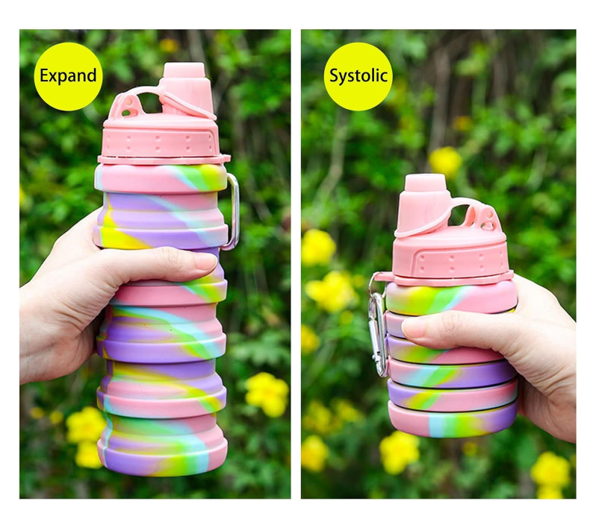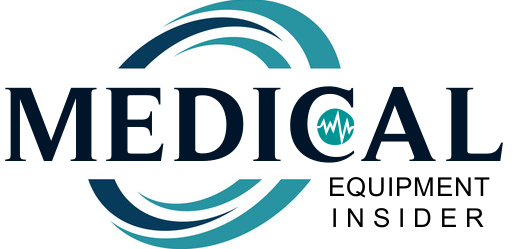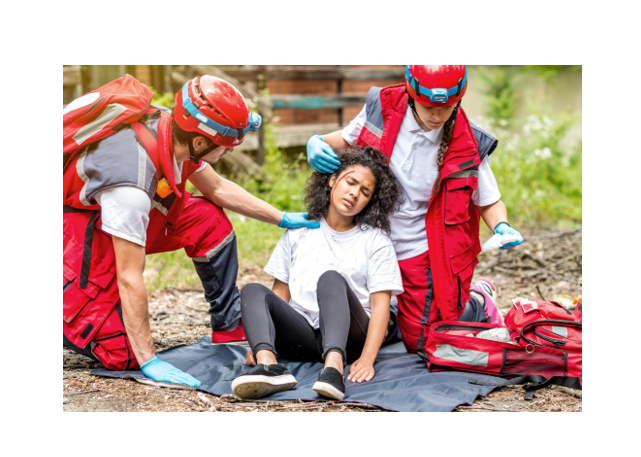Understanding common summer medical emergencies and knowing how to respond can save lives and keep your family safe. The summer season is full of fun and outdoor adventures that can also brings a higher risk of heat-related medical emergencies.
This article highlights the most frequent summer medical emergencies, offers practical tips for prevention and first aid as well as recommends essential medical supplies to keep on hand, including top-rated items available online.
Common Summer Medical Emergencies
1. Heat Cramps
What it is:
Painful muscle spasms (often in legs or abdomen) caused by loss of salts and fluids during heavy sweating. Symptoms: cramps, sweating, fatigue, thirst.
What to do:
Stop activity, rest in cool place, stretch slowly, provide water and electrolyte drinks. If cramps don’t ease within an hour or if underlying heart conditions exist, seek medical care.
2.Heat Exhaustion
What it is:
Moderate heat‑related illness when the body overheats and loses fluids & electrolytes. Symptoms include heavy sweating, cold moist skin, dizziness, nausea, headache, weak pulse, decreased urine output.
What to do:
Move to a cool area, remove tight/restful clothing, elevate legs, cool skin with wet cloths and fan, sip cool water or sports drinks. Monitor for improvement, should improve in ~30 min. If not or if vomiting, confusion, or worsening symptoms, get medical help.
3.Heat Stroke
What it is:
A medical emergency. Core body temperature exceeds ~40 °C (104 °F), sweating may stop (classic) or continue (exertional). Symptoms: high fever, confusion, slurred speech, seizures, unconsciousness, hot dry or sweaty skin.
What to do:
Call emergency services immediately. Move the person to shade/cool area, remove excess clothing, rapidly cool with cold water sponging or immersion, use ice packs in groin/armpits/neck, fan while misting, do not give drinks if unconscious. Monitor vital signs until help arrives.
4.Dehydration
What it is:
Loss of body fluid causing dry mouth, fatigue, headache, reduced urine output, dizziness. Severe cases require medical intervention (IV fluids).
What to do:
Encourage frequent fluid intake, water or balanced electrolyte drinks. Schedule activities in cooler times of day. If symptoms worsen or do not resolve, seek medical attention.
5.Severe Sunburn (“Sun Poisoning”)
What it is:
Severe UV‑damage to skin causing blistering, pain, systemic symptoms like headache, fever, nausea, dizziness. It may trigger dehydration or progress to heat stroke.
What to do:
Avoid further sun exposure; apply cool compresses, moisturizing lotion like aloe; hydrate well. For blistering or systemic signs, headache, fever, faintness, seek medical attention promptly.
6.Heat Rash
What it is:
Irritation of skin from clogged sweat glands. Appears as red clusters of tiny pimples or blisters.
What to do:
Keep the rash area cool and dry, apply soothing powders (like talc or cornstarch), and wear breathable fabrics until it clears.
How to Prepare for common summer medical emergencies
-
- Stay hydrated: Carry water and electrolyte drinks. Set reminders to drink.
- Dress smart: Wear light‑colored, breathable, loose‑fitting clothing, hats, and UV‑protective sunglasses.
- Plan wisely: Avoid peak heat hours (often 11 am–3 pm), schedule strenuous activity during cooler parts of the day, and acclimate gradually.
- Know the signs: Understand symptoms of heat illnesses and sun damage in yourself and others.
- Check vulnerable groups: Elderly, very young, people with chronic disease or certain medications (e.g. diuretics) are at higher risk.
Medical Equipment and Items to Stock
Some of the most important things to stock include include and not limited to;
- Comprehensive first‑aid kit.
- Electrolyte / oral rehydration sachets.
- Instant cold packs.
- Disposable gloves and CPR mask.
- Aloe vera gel / soothing lotions.
- Sunblock SPF 30+ broad spectrum.
- Small battery‑powered fan or misting spray bottle.
- Water bottles and reusable cooler packs.
Some top choices from Amazon to stock are as follows;
1.Comprehensive first‑aid kit
It should include but not limited to; bandages, gauze, antiseptic wipes, burn ointments, CPR face shield, cold packs.
a) YIDERBO First Aid Kits 275Pcs Survival Gear Home

b) First Aid Only 91248 OSHA-Compliant First Aid Kit, All-Purpose 50-Person Emergency First Aid Kit for Business, Worksite, Home, and Car, 260 Pieces

2. Electrolyte / oral rehydration sachets
Ideal to restore lost salts during cramps or dehydration.
a) TREVI™ Sugar Free Electrolytes – Drink Mix Hydration Powder Packets – 28 Count

b) Venture Pal High Sodium Sugar-Free Electrolyte Powder Packets – Hydration Packets with Sodium, Potassium

c) Nature Works Electrolyte Powder Sugar-Free Hydration Packets Variety Pack HydroMATE 30 Sticks

3. Instant cold packs
This is for rapid cooling during heat exhaustion or sunburn relief.
a) Everlasting Ice RX Instant Cold Packs

b) ICEWRAPS 4×7 Instant Cold Pack – Bulk Box of 50

4. Thermometer
Preferably handheld digital. It is for temperature measurement and monitoring.
a) THERMOBIO Medical Grade FSA HSA Approved Digital Thermometer.

b) iHealth No-Touch Forehead Thermometer for Adults, Kids, Babies – FSA HSA Eligible, 3 Ultra-Sensitive Sensors, Quiet Vibration Feedback, Digital Large LED Digits, Easy to Use for Home & Nurses, PT3

5. Disposable gloves and CPR mask
This is for safe care provision.
a) ProCure [200 Count] Disposable Nitrile Gloves – Latex Free, Powder Free Medical Exam Gloves
![ProCure [200 Count] Disposable Nitrile Gloves - Latex Free, Powder Free Medical Exam Gloves](https://medicalequipmentinsider.com/wp-content/uploads/2025/08/1-8.png)
b) MED PRIDE Disposable Medical Vinyl Exam Gloves Single Use Nitrile-Vinyl Blend Exam Gloves, Large 100 – Powder Free, Latex Free & Rubber Free – Single Use Non-Sterile Protective Gloves

6. Aloe Vera gel / soothing lotions
This is for sunburn relief.
a) Seven Minerals Organic Aloe Vera Gel from freshly cut 100% Pure Aloe – Big 12oz – HighestQuality, Texas grown, Vegan, Unscented – For Face, Skin, Hair, Sunburn relief

b) Aloderma Organic Aloe Vera Gel for Face & Body, 96% Pure Aloe Gel Made within 12 Hours of Harvest, Ideal for Skin, Scalp, & Hair Hydration, Calming Moisturizer for Soothing After Sun Care, 7.05oz

7. Sunblock SPF 30+ broad spectrum
This is for prevention.
a) Sun Bum Original SPF 30 Sunscreen Body Lotion – Broad Spectrum Moisturizing Sunscreen with Vitamin E – Hawaii 104 Act Compliant (Made without Octinoxate & Oxybenzone) – 8 oz

b) Banana Boat Sport Ultra Sunscreen Lotion SPF 30, Travel Size 3oz Twin Pack, Sweat & Water Resistant Sunblock for Active Lifestyle (Pack of 2)

8. Small battery‑powered fan or misting spray bottle
Ideal to facilitate cooling when outdoors.
a) O2COOL Deluxe Handheld Battery Powered Water Misting Fan (Purple)

b) HandFan Upgraded Portable Handheld Misting Fan, Rechargeable Personal Mister Fan, Spray Water Mist Fans, Foldable Mini Cooling Hand Fans for Summer Beach Travel Concerts, Gifts for Women (Royal Blue)

9. Water bottles and reusable cooler packs
Ideal for storing drinks cool.
a) RAYMYLO Insulated Water Bottle 64 oz, Triple Wall Vacuum Stainless Steel (Cold for 48 Hrs), Leak Proof & Non-BPA, Half Gallon Water Flask Jug with Paracord Handle & Straw Spout Lids

b) YCTMALL Collapsible Reusable Water Bottles comes with mountaineering Buckle 500ml silicone Water-proof camping water bottle

Stock Up Checklist for Common Summer Medical Emergencies
| Item | Purpose |
| First aid kit (one small, one large) | Immediate care for cuts, burns, sprains |
| Instant cold packs | Rapid cooling during heat illness or sunburn |
| Electrolyte drink sachets | Rehydration and salt replacement |
| Sunburn soother (aloe gel) | Relief from painful burns |
| Digital thermometer | Monitor fever or body temp |
| Disposable gloves & CPR mask | Maintain hygiene & safety during first aid |
| Water spray bottle or portable fan | Aid cooling during heat exposure |
Tips To Remember
- Keep your first‑aid kit accessible and periodically check/refresh supplies.
- Stay cool, hydrated and plan ahead when outdoors.
- Recognize symptoms early and act fast: moving to shade, cooling, hydrating, even before seeking medical care.
- Don’t underestimate severe sunburn, even without visible blistering it can cause systemic illness. Prevention is key.,
FAQs on Common Summer Medical Emergencies
When should I call for emergency help?
Heat stroke is a medical emergency. If someone has a very high temperature (≥40 °C or 104 °F), confusion, seizures, loss of consciousness, or stops sweating, call emergency services immediately.
How much fluid should I drink on hot days?
Don’t wait for thirst, sip water regularly and include electrolyte drinks especially with heavy sweating or exertion. Monitor urine color, pale yellow is ideal.
What’s the difference between heat exhaustion and heat stroke?
Heat exhaustion causes excessive sweating, weakness, dizziness, and nausea. Heat stroke is more severe: high fever, altered mental state, possible seizures, minimal sweating in classic form.
Can sunburn lead to dehydration or heat sickness?
Yes. Severe sunburn (“sun poisoning”) often brings fever, nausea and dizziness, increasing dehydration risk. It may progress to heat illness. Stay hydrated, cool, and seek medical attention if systemic symptoms appear.
Are children and elderly more at risk?
Absolutely. Young children don’t regulate heat well; older adults may have reduced thirst drive or mobility. Also, certain medications (e.g. diuretics, antihypertensive, antidepressants) increase susceptibility.
Conclusion
Staying safe during summer isn’t just about sunscreen, it’s about being ready for any medical emergency the heat may bring. By recognizing early warning signs, staying hydrated, dressing appropriately, and stocking essential supplies, you can enjoy summer with peace of mind.
Remember, prevention is always better than cure. Keep your first aid kits updated, learn basic emergency steps, and protect those most at risk like children and the elderly.
A well-prepared summer is a healthy summer. Stay cool, stay safe, and make every sunny day count.

